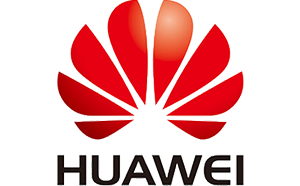
Huawei, established in 1987 by Ren Zhengfei, a former engineer in the People’s Liberation Army of China, has evolved into a prominent global provider of Information and Communications Technology (ICT) infrastructure and smart devices. With a substantial workforce of 194,000 employees, including 96,000 dedicated to Research and Development, Huawei’s presence extends across more than 170 countries and regions.
In its early years, Huawei’s primary focus was on constructing telecommunications networks for Chinese enterprises, earning a stellar reputation for delivering high-quality equipment at competitive prices, enabling rapid expansion and securing significant contracts with major Chinese telecommunications firms. During the early 1990s, Huawei embarked on international expansion, commencing with the sale of its equipment to emerging economies in Africa and Asia.
These nations, constrained by limited telecommunications infrastructure budgets, were particularly attracted to Huawei’s cost-effective solutions. By the early 2000s, Huawei had emerged as a dominant player in the global telecommunications market, with its equipment being utilised by leading telecommunications corporations worldwide, including:
- Vodafone
- BT
- Deutsche Telekom
Concurrently, Huawei diversified into other domains, including consumer electronics and enterprise technology. Notwithstanding its impressive growth, Huawei has encountered controversy, including allegations of intellectual property theft and espionage.
In 2019, the United States government placed Huawei on a trade blacklist due to national security concerns, resulting in a substantial decline in the company’s international business. Nonetheless, Huawei continues to stand as one of the world’s largest technology enterprises.
It has remained committed to substantial investments in research and development, particularly in areas such as 5G technology and artificial intelligence. Huawei has also prioritised the creation of its own ecosystem of products and services, encompassing a proprietary operating system and app store.
In summary, Huawei’s history is characterised by swift growth and expansion. The company has solidified its position as a key player in the global telecommunications market while branching out into consumer electronics and enterprise technology.
Nevertheless, Huawei’s journey has not been devoid of controversy and challenges, notably in the realm of national security. Despite these obstacles, Huawei remains a major force in the technology sector, poised to persist in innovation and expansion in the years ahead.
Huawei manufactures inverters in various global locations, including:
- China
- India
- Europe
The annual production capacity may fluctuate based on market demand and other factors, but Huawei is among the world’s leading inverter manufacturers and holds a substantial presence in the solar industry. Additionally, Huawei boasts an impressive array of credentials:
- 9 Network Energy R&D Centers
- 5 Smart PV R&D Centers
- Over 600 patents
- A team of more than 800 global smart PV professionals
- Over 200 energy engineers
- Achieved a revenue of US $122.9 billion in 2019
They have also received numerous awards, such as:
- Intersolar Award from 2011 to 2021
- Photon Test Award from 2011 to 2021
- TUV Rheinland Award – All Quality Matters from 2012 to 2021
- Solar Industry Award from 2012 to 2022
- Red Dot Design Award from 2013 to 2020
- IF Design Award from 2013 to 2021
- EuPD Research Top Brand PV Inverter Europe from 2019 to 2021
- China Red Star Design Award from 2015 to 2019
- Global Energy Storage System Innovation Award from 2018 to 2021
- Intersolar Europe Award for the Sun2000 15-20KTL series smart inverter in 2019
- MIREC Technology Innovation Award for the 1500V Smart PV Solution in 2019
- Recognised as the World’s Largest Inverter Supplier by Wood Mackenzie from 2015 to 2022.
These accomplishments highlight Huawei’s prominence in the industry.
Huawei Technologies (Australia) Pty Ltd.
Level 5, Tower A, 799 Pacific Highway
Chatswood, NSW 2067
Tel : +61 (0) 1800 046 639
Email : info.fusionsolar.au@huawei.com (general enquiry)
Email : eu_inverter_support@huawei.com (technical support)
If you wish to check the status of your inverter warranty please click here, and have your inverter serial number handy.
Huawei also offer a variety of services, such a download centre or the ability to give them online feedback, these services can be reached here.
For the most up to date product offering, direct from Huawei, please click here.
What we really like about the Huawei inverters is that the 5kw inverter comes as a HYBRID as standard. this means later on down the track you can add one of their own Luna batteries without the need to update your inverter.
SUN2000-KTL-M1 (three phase – 5-10 kw)
SUN2000-KTL-L1 (single phase – 2-6 kw)
Huawei also have the FusionSolar Smart PV Management System, which is an app/web portal where you can monitor the performance of your solar system from, you can learn more about it here.
Pros
PRO – The worlds largest inverter company
PRO -Australian Office
PRO – Inverters are all Hybrids, meaning you can add a battery later without changing hardware.
PRO – They manufacture all components themselves.
PRO – No internal fan, meaning that operate in a whisper quiet fashion.
Cons
CON – Can be quite tricky to install and we’ve noticed installers having a few issues with commissioning them.
Our Thoughts
A quality product, manufactured by a massive Chinese company with a strong and long trading history. They produce and sell more inverters each year than any other company.
The Australian office allows for warranty issues to be catered for, even if your installation company disappears.
They will be a good choice by anyone, that will last the test of time and produce power for years to come.
The fact that they come as a hybrid as standard is brilliant, meaning you can add a DC battery to them in the future, without any changes.
We would install them on our own house or business.
